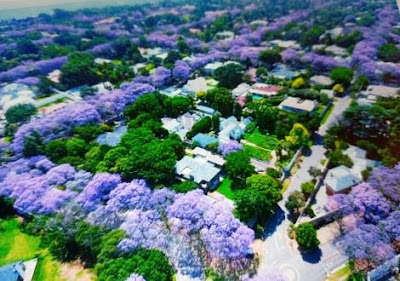The month of October marks the height of the date-harvesting season which started in September.
 |
| Photos Dr Lotfy Boulos (RIP) The Street Trees of Egypt |
Throughout the countryside and the many oases dotting the country, men can be seen climbing the palm trees wearing a jute belt that attaches them to the tree while using the step like cut leaves of the palm to reach to the top and pick the precious fruit.
Date palms have grown in Egypt since prehistoric times. The vivid paintings on the walls of temples clearly depict the palms, and the fruits have been found in burial grounds. Every part of the tree was used as it still is! The dried leaf stalks are used to cover roofs of buildings, create fences, weave mats, crates and baskets.
The thick fibers at the base are used in rope-making. The sturdy trunks were traditionally incorporated in columns for temples and homes.
The Phoenix Dactylifera derives from a Greek word meaning finger-shaped fruits. It has most probably originated from the North African oases.
The date palm is a marvel in terms of structure since it can withstand severe wind storms which its sturdy trunk is flexible enough to overcome.
It can rise to almost 30 meters and has feather-like leaves spanning from 5 to 7 meters. The flowers are small and white on a densely branched spandex. It is pollinated by manually spreading male pollen on the female flowers - an intricate and hard procedure but one which ensures the quality and quantity of the palm. It is propagated also by offshoots and seeds. In a good season the palm carries some 200 kilos of dates.
Date palm loves arid and warm weather... As Dr Lotfy Boulos remarks in his book The Street Trees of Egypt: “the date palm likes its feet in the water and its head in the oven.”
Although the date has high levels of sugar its glycemic index level is not high so it does not shoot up blood sugar levels. The main dates in Egypt are Zaghloul the bright red and crunchy dates, the yellow Hayani, Bahri, Rotab, Siwi, and Samani.
Date palm has been mentioned in all religious books as a holy, life sustaining tree. Dates are very nutritious and rich in Vitamin A, B1, and B2, as well as fiber, protein, iron and potassium which regulates blood pressure. It is highly recommended to eat dates on an empty stomaching to aid the digestive system.
If the reader wants further interesting facts about this tree, do refer to Warda Bircher's book The Date Palm: a Friend and Companion of Man.
Compiled by TREE LOVERS ASSOCIATION









